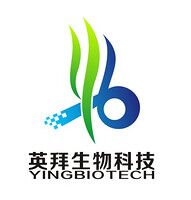Gast胃癌體細(xì)胞突變PCR 芯片 ric Cancer Mutation PCR Array

Gast胃癌體細(xì)胞突變PCR 芯片 ric Cancer Mutation PCR Array
APC: 4 Assays
The most commonly detected APC inactivation mutations are mainly composed of truncation mutations (due to nonsense mutations and frameshift mutations) and point mutations between codons 1250 and 1578.
BRAF: 2 Assays
There are two major classes of BRAF mutations. One class leads to increased BRAF kinase activity, such as the p. V600E mutation. The other class leads to impaired kinase activity, such as the p.G469A mutation.
CDH1: 1 Assay
The top CDH1 mutations either are missense mutations or frameshift mutations that lead to C-terminal truncation and secreted E-cadherin fragments.
CDKN2A: 1 Assay
The top CDKN2A loss-of-function mutations occur in the consensus ankyrin domain, which leads to inability to form stable complexes with its targets.
CTNNB1: 18 Assays
The most frequently detected CTNNB1/beta-catenin mutations result in abnormal signaling in the WNT signaling pathway. The mutated codons are mainly several serine/threonine residues targeted for phosphorylation by GSK-3beta.
ERBB2: 2 Assays
The most frequently identified ERBB2 activating mutations cluster in the ERBB2 kinase domain region.
FBXW7: 1 Assay
Typically detected mutations lay in either the third or fourth repeat of the protein's WD40 domain, typically involved in protein-protein interactions.
HRAS: 1 Assay
The most important HRAS mutation in gastric cancer occurs at codon 12.
KRAS: 10 Assays
The mutation assays include the most frequently occurring mutations in KRAS codons 12, 13, and 61. Mutations at these positions result in reduced intrinsic GTPase activity and/or cause KRAS to become unresponsive to RasGAP.
NRAS: 1 Assay
The most important NRAS mutation in gastric cancer occurs at codon 13.
PDGFRA: 1 Assay
The most frequently identified PDGFRA gain-of-function mutations include deletion, point mutation, and deletion-insertion mutations in regions p.D842-S847 and p.R554-E571 as well as the point mutations p.N659Y and p.T674I.
PIK3CA: 4 Assays
The most frequently occurring PIK3CA mutations mainly belong to two classes: gain-of-function kinase domain activating mutations and helical domain mutations that mimic activation by growth factors.
TP53: 35 Assays
The most frequently detected somatic mutations in TP53 are largely composed of DNA-binding domain mutations which disrupt either DNA binding or protein structure.








